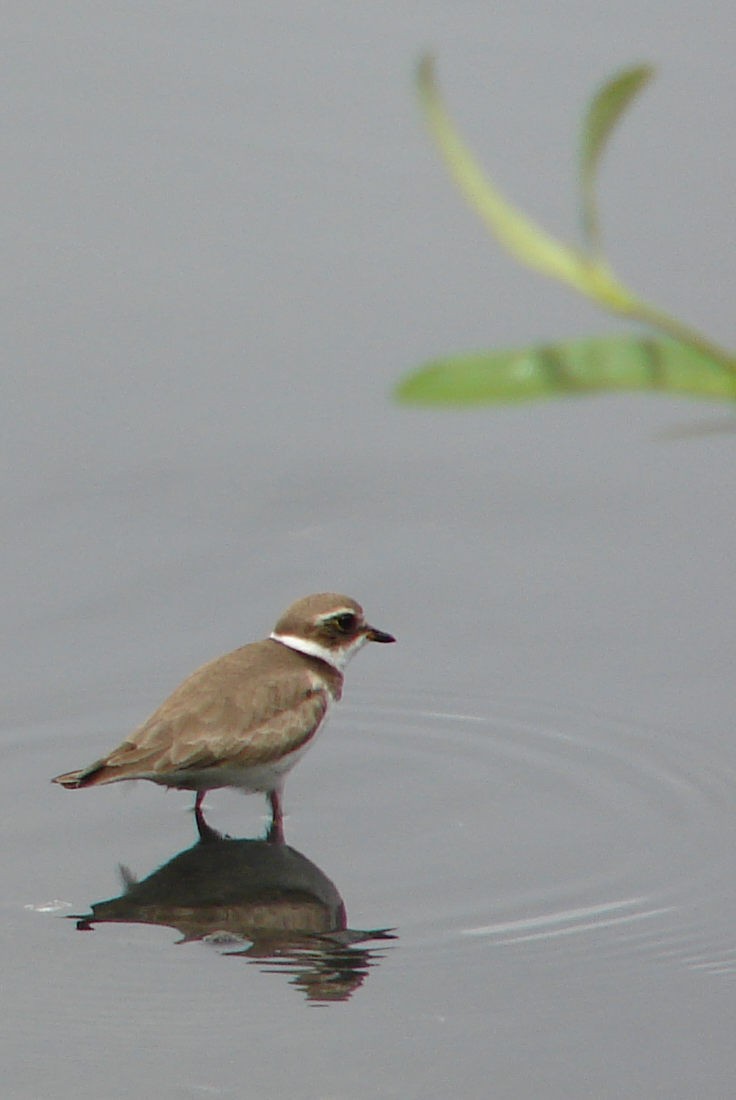Semipalmated Plover
A species of Typical plovers Scientific name : Charadrius semipalmatus Genus : Typical plovers
Semipalmated Plover, A species of Typical plovers
Botanical name: Charadrius semipalmatus
Genus: Typical plovers
Content
Description People often ask General Info
 Photo By Zimbres , used under CC-BY-SA-2.5 /Cropped and compressed from original
Photo By Zimbres , used under CC-BY-SA-2.5 /Cropped and compressed from original Description
The semipalmated Plover is a small shorebird. It is often seen along sandy or rocky coasts and tidal flats, where it feeds on insects, crustaceans, and other small prey. This species breeds in Arctic tundra habitats and migrates to coastal areas in the winter. The Semipalmated Plover is known for its unique courtship display, where the male performs a series of jumps and calls to attract a mate. This species is also a strong flier, capable of traveling long distances during migration. 
Size
17-19 cm (6.5-7.5 in)
Colors
Black
Bronze
Gray
White
Life Expectancy
9 years
Nest Placement
Ground
Clutch Size
2 - 5 eggs
Incubation Period
1 brood
Number of Broods
23 - 25 days
Feeding Habits
Semipalmated Plover forage for food in quick dashes interspersed with pauses, using sight and sound cues to detect prey. They feed on invertebrates like spiders, fly larvae, beetles, and crustaceans, occasionally consuming plant seeds and horseshoe crab eggs. Semipalmated Plover extract worms from the substrate with a characteristic tug.
Habitat
Semipalmated Plover typically inhabit open ground on northern beaches or flats in Canada and Alaska for breeding, favoring areas with minimal vegetation. They prefer coastal environments during migration and winter, traveling as far south as South America. Habitats range from arctic tundra and pebbly grounds near water bodies, to mudflats and riverbanks for feeding. Often found near sparse beach grass, willow, or sedges, semipalmated Plover adapt to various nonbreeding grounds such as agricultural fields, beaches, and sometimes urban green spaces like golf courses or sports fields.
Nest Behavior
The male semipalmated Plover initiates nest building by scraping at the ground, which the female then selects by sitting and calling. Breeding pairs lay eggs in these scrapes, with parental care shared between both sexes until the young are ready to fledge.
Nest Characteristics
Semipalmated Plover builds a shallow scrape nest, typically on dry ground with good visibility such as gravel, pebbles, sand, or short tundra vegetation. Located near a wetland or wet area, it measures approximately 3.6 inches across and 1.2 inches deep, lined with plant matter, shells, and debris.
Dite type
Aquatic invertebrate eater
People often ask
General Info
Feeding Habits
Bird food type
Sounds
Call
Recording location: United States
Song
Recording location: United States
Behavior
The semipalmated Plover exhibits remarkable behavioral patterns, primarily involving strategic arrival times at breeding grounds, with males preceding females. They engage in aerial displays characterized by deliberate, slow wingbeats, often ascending beyond 150 feet while emitting a persistent chu-weep call. These displays, known as 'butterfly flights,' are crucial for territory establishment and mate attraction. Upon the female's arrival, the male intensifies courtship through ground pursuits, tail fanning, head lowering, and distinctive sputtering calls, illustrating complex reproductive rituals and habitat interaction.
Species Status
Not globally threatened.
Scientific Classification
Phylum
Chordates Class
Birds Order
Shorebirds Family
Plovers Genus
Typical plovers Species
Semipalmated Plover